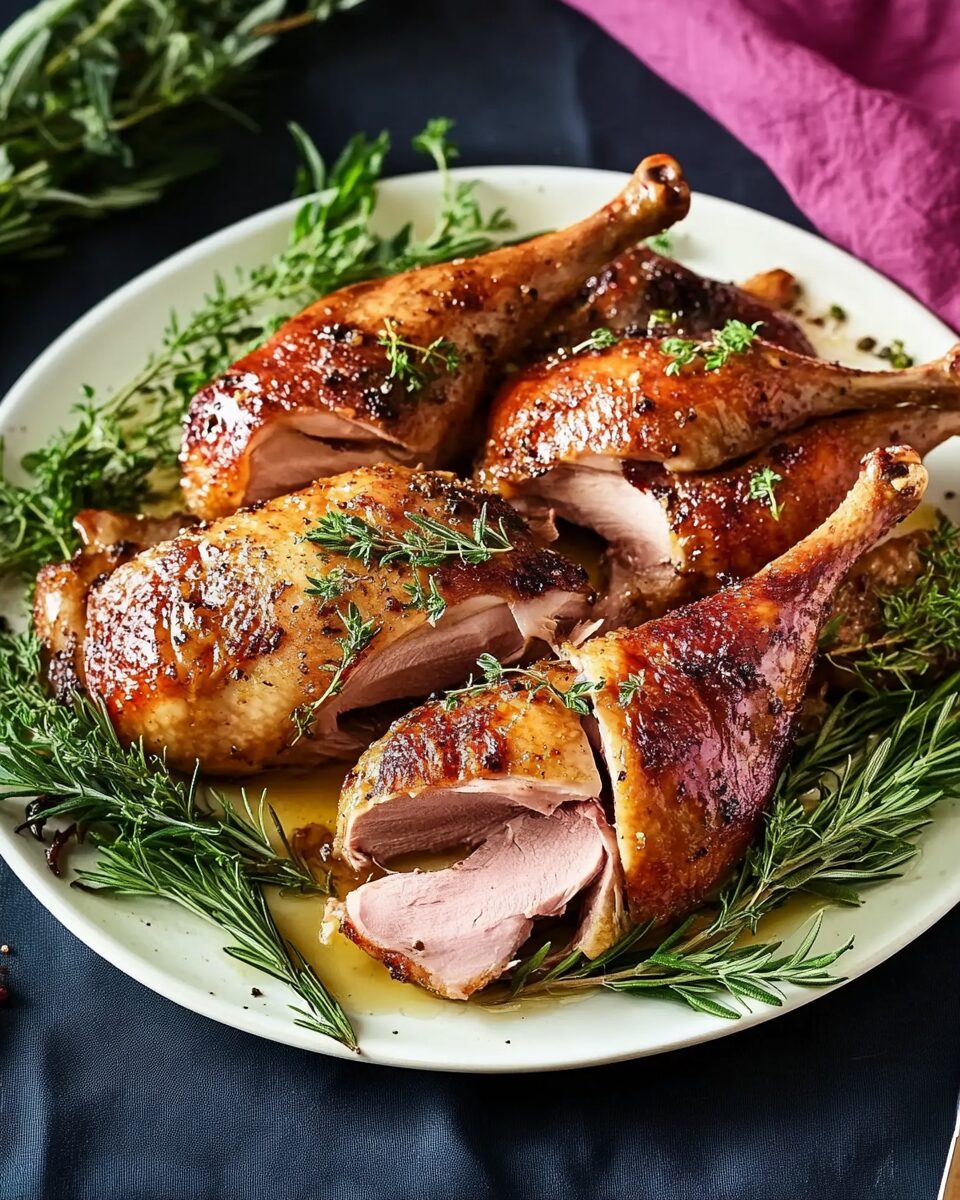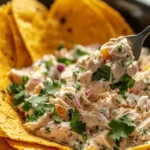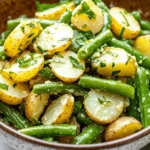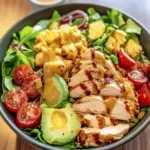This roasted duck is a feast for the senses. Coated with a simple but flavorful rub of paprika, salt, and pepper, then basted with rich, melted butter, the duck emerges from the oven golden brown with crispy skin and tender, juicy meat. Its buttery aroma fills the kitchen, making it an irresistible centerpiece for any occasion.
The recipe is easy enough for beginners yet sophisticated enough to impress at a holiday table. Whether served alongside roasted vegetables or classic sides like mashed potatoes and cranberry sauce, this roasted duck offers an indulgent, hearty meal that’s full of flavor and perfect for gathering loved ones around the table.
Full Recipe:
Ingredients:
- 2 teaspoons paprika
- 2 teaspoons salt
- 1 teaspoon black pepper
- 1 (5-pound) whole duck
- ½ cup butter, melted, divided
Directions:
- Preheat your oven to 375°F (190°C).
- Combine paprika, salt, and black pepper in a small bowl. Rub this spice mixture generously over the duck’s skin.
- Place the duck in a roasting pan, ensuring it’s breast-side up.
- Roast the duck in the preheated oven for 1 hour.
- After the first hour, spoon ¼ cup of the melted butter over the duck. Return it to the oven and continue cooking for an additional 45 minutes.
- Spoon the remaining ¼ cup of melted butter over the duck and roast for another 15 minutes or until the skin is golden brown and crispy.
- Allow the roasted duck to rest for 10 minutes before carving. This helps retain the juices and enhances flavor.
Prep Time: 10 minutes | Cooking Time: 2 hours | Total Time: 2 hours 10 minutes
Kcal: 625 kcal | Servings: 4
The Art of Roasting a Perfect Duck: A Culinary Delight for Any Occasion
Roasted duck is an iconic dish that has graced tables for centuries, celebrated for its rich flavor, crispy skin, and melt in your mouth tenderness. While it may seem like an intimidating recipe to tackle, this dish is far simpler than most people think. With the right preparation and techniques, roasting a duck can be a rewarding culinary experience that transforms an ordinary dinner into a luxurious feast.
A Brief History of Roasted Duck
The tradition of preparing duck stretches back through history, with recipes originating in various cultures. In China, for example, Peking duck has been a delicacy for over 700 years. In Europe, roasted duck often appears in French and German cuisine, served with accompaniments such as cherries, oranges, or savory herbs. Duck’s popularity stems from its unique flavor profile: slightly gamey, yet tender and juicy, making it a favorite for special occasions.
Roasted duck is often associated with festive celebrations, such as Christmas in Europe or Thanksgiving in North America, where it serves as an alternative to the traditional turkey. Its rich, buttery taste and crisp skin provide an elegant dining experience, making it a favorite among chefs and home cooks alike.
Why Choose Duck Over Other Meats?
While chicken and turkey are more common in many households, duck offers a distinctive culinary experience. Its flavor is deeper and more complex, with a natural richness that doesn’t require heavy seasoning. Additionally, duck is higher in fat content than chicken or turkey, which contributes to its tender texture and self-basting qualities during roasting.
Duck also offers versatility in the kitchen. The rendered duck fat can be collected during cooking and used for a variety of purposes, such as roasting vegetables or making crispy potatoes. This adds another layer of value to the dish, ensuring that nothing goes to waste.
Nutritionally, duck is a great source of protein, B vitamins, and essential minerals like iron and zinc. Its fat content, when consumed in moderation, provides a flavorful and satisfying meal.
Secrets to Achieving Crispy Skin and Juicy Meat
One of the hallmarks of a perfectly roasted duck is its crispy, golden skin. Achieving this texture requires careful preparation and attention to detail. Here are some tips to ensure your duck turns out perfectly every time:
- Dry the Skin Thoroughly: Moisture is the enemy of crispness. Before roasting, pat the duck dry with paper towels, and if possible, let it air dry in the refrigerator for a few hours or overnight. This helps the skin dry out, allowing it to crisp up beautifully during roasting.
- Score the Skin: Duck has a thick layer of fat beneath its skin. Scoring the skin in a crisscross pattern allows the fat to render out during cooking, creating a crispy exterior while keeping the meat moist. Be careful not to cut into the meat itself when scoring.
- Start with a Hot Oven: Beginning the roasting process at a higher temperature helps the skin to crisp up quickly. After the initial browning, the heat can be lowered to ensure even cooking without drying out the meat.
- Baste with Butter: Basting the duck with melted butter not only enhances its flavor but also promotes a golden, shiny finish. Butter adds richness to the dish, complementing the natural flavors of the duck.
- Rest Before Carving: Allow the roasted duck to rest for at least 10 minutes after removing it from the oven. This step is crucial for retaining the juices, making the meat tender and succulent when served.
Serving Suggestions and Pairings
Roasted duck pairs beautifully with a variety of side dishes and sauces. Its rich, savory profile is complemented by both sweet and tangy flavors, making it a versatile centerpiece for any meal.
- Vegetables: Roasted root vegetables, such as carrots, parsnips, and sweet potatoes, absorb the duck’s drippings and make for a flavorful side dish. Brussels sprouts sautéed in duck fat are another excellent choice.
- Fruits and Sauces: Sweet and acidic flavors, such as orange, cranberry, or cherry sauces, cut through the richness of the duck and add a refreshing contrast. For a more exotic twist, try a plum or hoisin based sauce inspired by Asian cuisine.
- Starches: Mashed potatoes, wild rice, or polenta provide a hearty base to balance the meal. Duck fat roasted potatoes are particularly indulgent and elevate the dish to restaurant-quality standards.
For beverages, a medium bodied red wine, such as Pinot Noir or Merlot, pairs beautifully with roasted duck. Alternatively, for those who prefer white wine, a crisp Riesling or Chardonnay complements the dish’s richness.
Variations and Customization
While this recipe is simple and delicious as-is, there are plenty of ways to customize it to suit your tastes:
- Herbs and Spices: Experiment with additional herbs such as thyme, rosemary, or sage. You can also add a pinch of garlic powder, cayenne pepper, or smoked paprika for a more robust flavor.
- Stuffed Duck: For added flavor, stuff the cavity of the duck with aromatics such as lemon wedges, onion slices, and fresh herbs. The steam from these ingredients enhances the duck’s flavor while keeping it moist.
- Asian-Inspired Twist: Incorporate soy sauce, ginger, and star anise into the spice rub for a Chinese-inspired flavor. Serve with a side of steamed rice and a dipping sauce of hoisin and sesame oil.
Common Questions About Roasting Duck
1. Is duck difficult to cook?
Duck is surprisingly easy to prepare, especially when roasted. Its high-fat content helps to keep the meat moist, making it more forgiving than leaner proteins like chicken breast.
2. How do I handle the leftover fat?
Duck fat is liquid gold in the culinary world. After roasting, strain the fat through a fine mesh sieve and store it in the refrigerator. Use it for frying eggs, sautéing vegetables, or roasting potatoes for an unbeatable flavor boost.
3. How can I tell if the duck is done?
The internal temperature of the thickest part of the duck (usually the thigh) should reach 165°F (74°C) for safe consumption. Using a meat thermometer ensures accurate results.
Conclusion
Roasting a duck may sound like an advanced culinary endeavor, but with the right techniques, it’s well within reach for home cooks of all skill levels. Its rich, indulgent flavor and crispy skin make it a shows topping centerpiece for any meal, whether it’s a holiday feast or a casual Sunday dinner.
This recipe’s simplicity allows the natural flavors of the duck to shine, while the buttery basting and seasoning elevate the dish to gourmet status. With a little preparation and attention to detail, you’ll create a roasted duck that’s sure to impress family and friends.
Whether you serve it with classic sides or experiment with bold flavors, roasted duck offers a versatile and satisfying dining experience. So the next time you’re looking for a dish that’s both elegant and delicious, consider giving roasted duck a try it might just become your new favorite!






